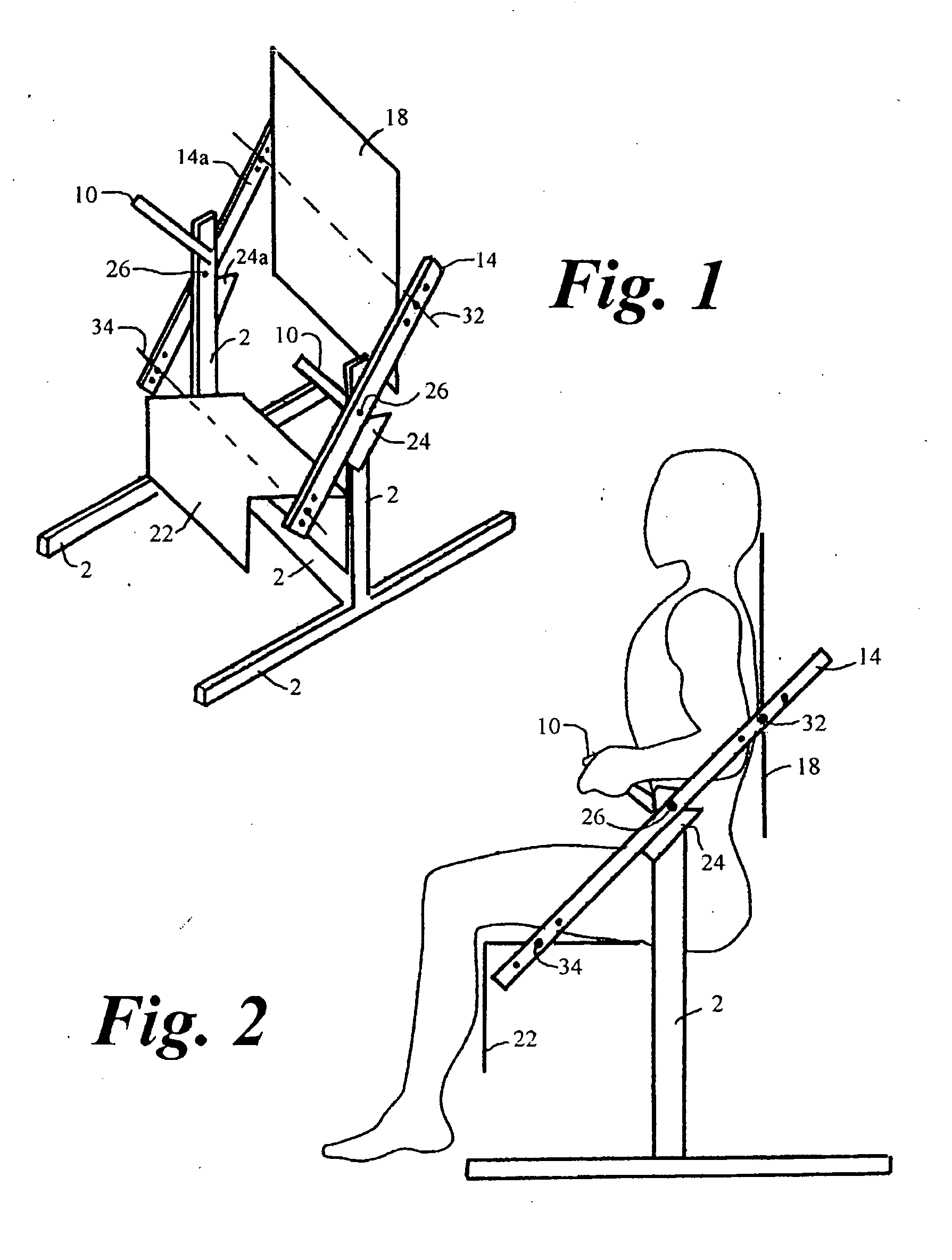Spine tensioning support chair
a support chair and spine technology, applied in the field of physical therapy devices, can solve the problems of inability to provide spine tensioning, difficult for some users, and pain in the back, and achieve the effect of simplifying access
- Summary
- Abstract
- Description
- Claims
- Application Information
AI Technical Summary
Benefits of technology
Problems solved by technology
Method used
Image
Examples
Embodiment Construction
[0136] Referring to FIG. 1, the apparatus comprises a base member 2, consisting of two parallel elongated horizontal base members, two vertical risers, and a horizontal base member perpendicular to and connecting the two elongated horizontal base members. Body support elevation arms 14, 14a are elongated members pivotally mounted to base member 2 via pivot connection 26. Dual body supports, 18 and 22, are pivotally mounted to body support elevation arms 14 and 14a via support rods 32 and 34. Hand grips 10 and body support elevation limit blocks 24 and 24a are attached to base member 2.
[0137]FIG. 2 shows a user in the sitting position. The elevation of body support 18 is higher than body supports 22 creating a chair or seated position. A fixed, stable seat is created when body support elevation arm 14 rests on body support elevation limit block 24.
[0138]FIG. 3 shows the user in the reclined seated position dual body supports at near equal elevation. A fixed, stable, reclined positi...
PUM
 Login to View More
Login to View More Abstract
Description
Claims
Application Information
 Login to View More
Login to View More - R&D
- Intellectual Property
- Life Sciences
- Materials
- Tech Scout
- Unparalleled Data Quality
- Higher Quality Content
- 60% Fewer Hallucinations
Browse by: Latest US Patents, China's latest patents, Technical Efficacy Thesaurus, Application Domain, Technology Topic, Popular Technical Reports.
© 2025 PatSnap. All rights reserved.Legal|Privacy policy|Modern Slavery Act Transparency Statement|Sitemap|About US| Contact US: help@patsnap.com



